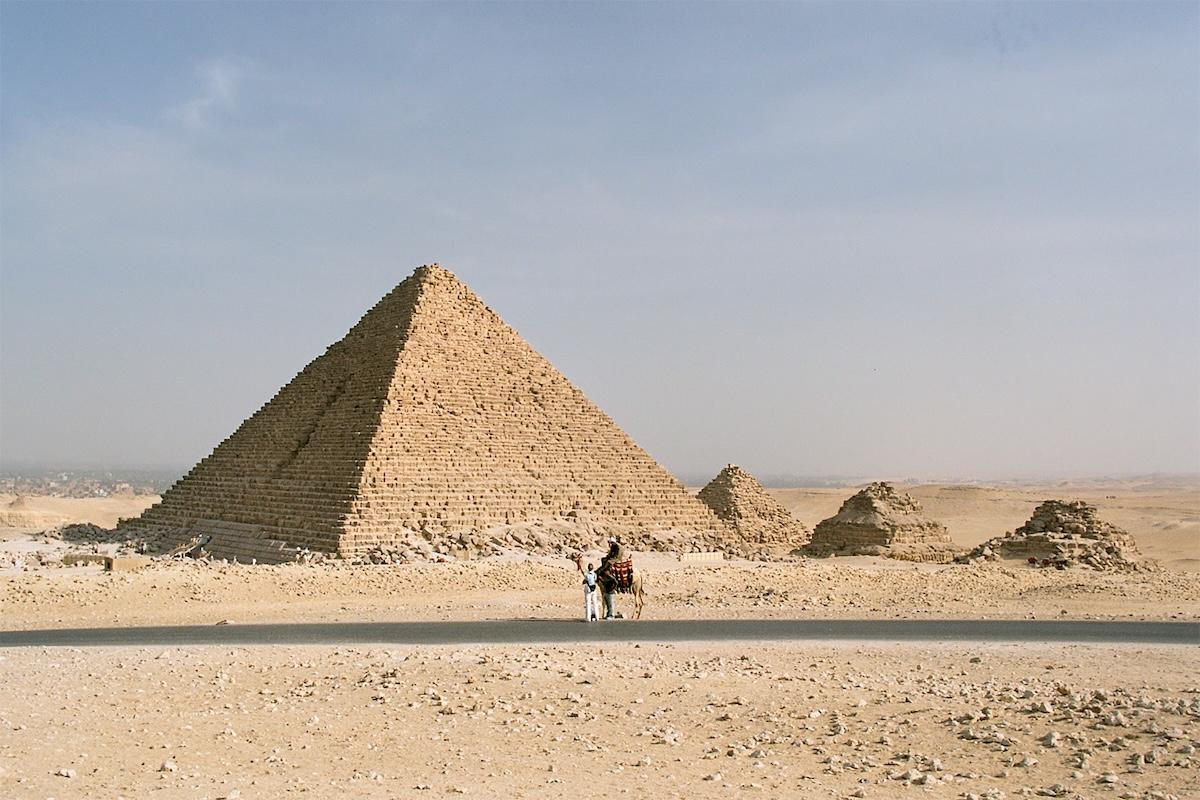
Pyramid of Menkaure, Giza, Egypt
On January 25, an Egyptian bureaucrat posted a video to social media describing plans to resurface one of the great Pyramids of Giza with granite. The initiative, announced in this Facebook video by Dr. Mostafa Waziri, the secretary general of Egypt’s Supreme Council of Antiquities, would be in collaboration with Japanese archaeologist Sakuji Yoshimura. It would be focused on the resurfacing of the smallest of the three main pyramids, the Pyramid of Menkaure. The proposed project would begin with a year of study before recoding and recasing the pyramid with granite, which could take up to three years in total. In the video and subsequent Instagram post, Waziri called this the “Project of the Century.”
However, the announcement, which was made without scientific and archeological backing, was met with harsh criticism from archaeologists and the public alike. Many complained about the lack of support from the scientific or archaeological community. Others worried that making the pyramid look brand new might turn it into an “ersatz Disneyland" as per the New York Times. In addition, this announcement brings up a common debate in the field of archaeology: do we work to keep ancient structures as they were in their prime, or do we leave them to battle the elements, which sometimes means leaving them as ruins?
Egyptologist Monica Hanna posted a response on social media, calling the announcement a complete surprise, and outlined points of opposition to the project. Hanna’s first concern was rudimentary: if Dr. Waziri wanted to do this resurfacing to one of the Seven Wonders of the World, he should have published a completed project study in a scholarly archeological journal with scientific backing, rather than a dramatic video with little to no scientific information. Hanna goes on to explain why historically the blocks were left unpolished by the ancient Egyptians, she cites historical evidence of what the bricks were used for and what would happen to other archaeological evidence and asks if the resurfacing project follows the International conventions of regulating conservation operations.
Some Egyptologists were more optimistic. “Scanning and documenting the pyramid and the blocks on the ground is very useful," Salima Ikram, Professor of Egyptology at The American University in Cairo, told the New York Times. Ibrahim Mohamed Badr, the head of the scientific team responsible for the 3D analysis of the stones, said, in a video, that the plans call for using and reassembling the actual blocks that fell from the pyramid itself. He said, “We use international restoration materials that have standardized specifications approved by international committees for restoration and assembly work.”
Coincidentally, this project also coincides with the anticipated opening of the Grand Egyptian Museum, an archaeological museum that has been under construction for two decades and is slated to open later this year.
























